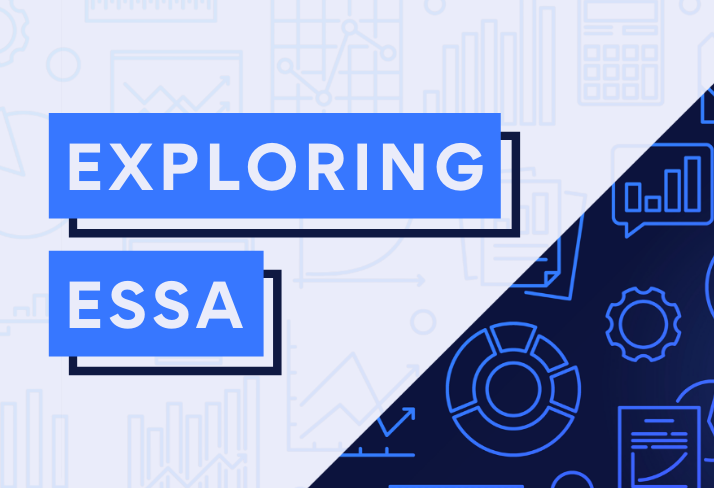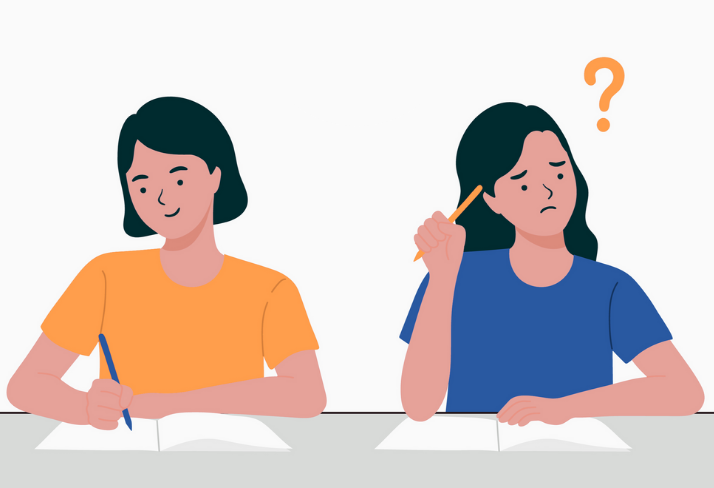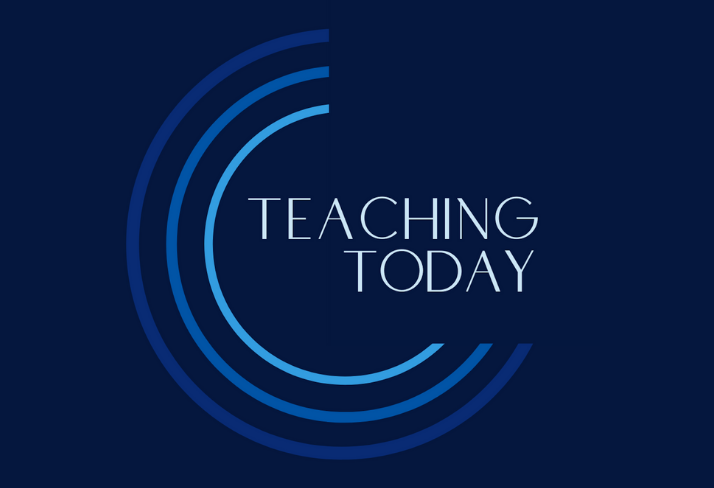|
Equitable practices empower students to recognize and develop their own talents and skills, and become agents of change for their futures.
What is equity? How do we define and use it in education?
Whenever there is a buzzword at play in education circles, we like to unpack, define, and interpret how the term applies to educators and schools. Let’s start with the difference between equity and equality. A simple, working understanding of equity involves “trying to understand and offer people what they need to enjoy full, healthy lives." In education, equity means truly striving to achieve the best possible outcome for each individual student. Equality, in contrast, aims to ensure that everyone is offered the same things in order to enjoy full, healthy lives. As educators, the notion of offering all people the same things immediately contradicts our understandings of differentiation. We know that not all students have the same needs. Furthermore, students from underserved backgrounds, generally low-income or students of color, may benefit from a variety of resources to succeed academically. All students benefit from equitable practices. I’d like to suggest that we not only offer students additional opportunities or resources to “catch up” or to “level the playing field”, but instead create a new playing field in education. We can start with our own assessment policies and systems in our classrooms, departments, schools, and districts. Creating equitable education and assessment practices doesn’t end with offering students what they need or deserve to succeed. Equitable policies and practices aim to empower students to recognize and develop their own talents and skills; to become agents of change for their futures. Equity means achieving lasting results for all people, regardless of their socioeconomic, racial, and ethnic backgrounds.
Examining our assessment practices
Equity work in any context may require seeing differently, thinking differently, and even working differently. Therefore, it may be helpful to start by asking ourselves some probing questions about our own assessment practices and beliefs. Consider discussing these questions at your next faculty meeting to norm understandings around assessments, or answering them individually, as a way to understand your own beliefs.
Creating equitable assessments
To work toward equity in education and in assessment, let’s examine our assumptions about educational achievement and assessment. Ibram X. Kendi, author of How to Be an Anti-Racist, explains how traditional testing policies perpetuate racist (and inequitable) ideas and policies in education. He explains that “achievement in this country is based on test scores, and since white and Asian students get higher test scores on average than their black and Latinx peers, they are considered to be achieving on a higher level.” We may not have the power to single-handedly change high-stakes testing policies that use assessment scores to measure educational achievement, but we do have influence over our curricular decisions and how we assess and grade our students. We can create more equitable curricula and assessment practices and policies to create more equitable education. To do this, we must:
Assess what we teach & teach what we assess
There are some basic rules of thumb that we can use to create a more equitable foundation for assessing students. As a starting point, we can simply ensure that we assess what we teach and teach what we assess. Backwards design, from Grant Wiggins and Jay McTighe’s Understanding by Design model, offers a framing to ensure that we first plan our assessments — including all the key teaching points and skills needed for them — as a guide to our instruction. Next, we “backwards plan” our units and lessons to ensure that we are meeting each of our teaching goals as we work our way toward the end of unit assessment. In addition to planning for end of unit assessments, we can also plan our formative assessments, which will help us understand students’ mastery of each discrete skill throughout our lessons. This will also create space to reteach concepts as needed, as well as ensure that we are offering students a range of possible opportunities to learn throughout a unit. When formative assessments reveal or confirm for us which students are struggling or need to revisit a concept or skill, we can differentiate how we reteach or review. If the teaching didn’t stick as we’d hoped the first time around, why would we teach it again in the same way? These practices can help us take initial steps toward ensuring our students are offered fair assessment opportunities, and we can build equity from there.
Differentiating assessments
Traditional assumptions about assessment may lead us to believe that asking students to complete different assessment tasks to demonstrate mastery may not feel fair — but it may actually be more equitable. I admit that early in my teaching career, the concept of differentiated assessments took me a while to grasp and to actually believe in. Many of us use differentiation expert Carol Ann Tomlinson’s helpful framework to guide our daily planning and instruction. We plan differentiated processes using a variety of scaffolds, tools, extensions, student groupings, pacing and modalities. We differentiate content in the form of offering or using a variety of “levels” of texts, math problems, and complexity of tasks. We strive to create a supportive and differentiated learning environment to meet a variety of students’ needs. But, when it comes to differentiating products or assessments, it is a little more complicated. Here are a few simple ways to differentiate assessment products to create equity:
Make assessments rigorous, not rote
Research shows that, especially in marginalized or lower income neighborhoods, lessons for students often focus on rote skills and procedures. Often, this means that students are not expected to achieve, nor learn more rigorous skills and content, when compared with their peers in higher income communities. As we know, rote and procedural learning tends to be boring, and when learning is boring, we often disengage or act out. This may become a serious equity issue in marginalized communities, especially for students of color, where, when students opt out of learning or act out, they may face harsh (or criminalized) punishment. Either way, students lose. Instead of focusing assessments on acquisition or mastery of rote skills or procedures, we can aim to emphasize reasoning and problem-solving skills. Research consistently proves that opportunities for supported, productive struggle can motivate students to stick with a task and to stay engaged as they learn. We all do better when we can engage in productive challenges.
Make assessments relevant
Culturally relevant curriculum and instruction create more equitable education for all students. Zaretta Hammond, in her wonderful book Culturally Responsive Teaching & the Brain, defines culturally responsive teaching as “encompassing the social-emotional, relational, and cognitive aspects of teaching culturally and linguistically diverse students.” She believes that when we teach with these concepts as our guiding lights, we create more equitable education. Similarly, we can create more equitable assessment practices if we offer students experiences that are adapted for their cultural and linguistic diversity and are cognitively appropriate and engaging. Here are a few simple ways to make assessments more culturally relevant or responsive:
Develop and maintain a growth mindset
We often think about how important it is for students to develop a growth mindset, yet, as educators, we need to take a hard look at our own biases and assumptions that things may be “too hard” for students. As Carol Dweck points out in the The Power of Yet, with scaffolding and high engagement tasks, we may find that students surprise us and we can reframe our thinking to become, “they don't get it yet.” Many factors contribute to a student’s mindset and development of a learner’s stance, especially a teacher's language and perspective. Here are a few simple ways to support a growth mindset for assessment practices:
Cultivating strengths and talents
As educators, our job is to cultivate students’ strengths, as well as help them develop in areas of struggle. All students benefit when teachers recognize and cultivate their passions, talents, and skills. Students also benefit when teachers recognize that a class or subject is an area where they need some extra support and that simply making progress is an achievement, even if their skills have not met or exceeded standards. When students are not achieving in a particular subject area, it may be time to think differently about how we assess them. It is possibly a waste of talent and potential if we expect students to spend academic time and energy striving to achieve in an area that continues to be a struggle for them. Instead, we can think more holistically about each student, in an effort to balance supporting improvement in areas of challenge with sponsoring soaring success in areas of strength. We can continue to cultivate and encourage a student’s passions and talents, even when assessing them. Measuring and recognizing ongoing progress and effort are important components of assessing a student’s learning.
Many of us were educated within systems that housed traditional or standardized assessment and grading systems. As educators, we have all consciously or unconsciously based a grading policy or assessment practices on the modeling we learned as students. It can take a leap of faith to imagine new and innovative assessment practices — but we must rethink our notions of fairness and begin to think about developing practices that are equitable for the students in our care.
|
|
The Center for Professional Education of Teachers (CPET) at Teachers College, Columbia University is committed to making excellent and equitable education accessible worldwide. CPET unites theory and practice to promote transformational change. We design innovative projects, cultivate sustainable partnerships, and conduct research through direct and online services to youth and educators. Grounded in adult learning theories, our six core principles structure our customized approach and expand the capacities of educators around the world.
|
ABOUT US
525 West 120th Street, Box 182 New York, NY 10027 416 Zankel Ph: (212) 678-3161 [email protected] Our Team Career Opportunities |
RESOURCES
Professional Articles Ready-to-Use Resources Teaching Today Podcast Upcoming PD Opportunities |
COACHING SERVICES
Custom Coaching Global Learning Alliance Literacy Unbound New Teacher Network Student Press Initiative |

























